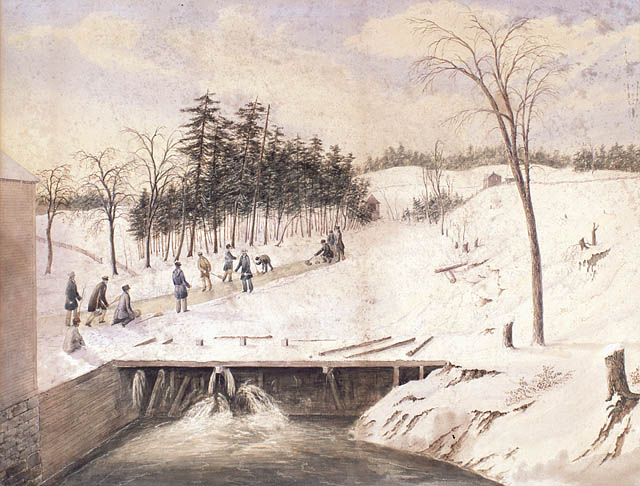The Honourable William Dickson was educated, eloquent, and greatly opinionated (in addition to his also being the founder of the Township of Dumfries, and of Galt); Three qualities which were often demonstrated in his personal correspondence and at various speaking engagements. His sentiments are so clear that you can almost picture him preaching the benefits of a conservative and obedient life under the Crown (the dour expression in the photo below should assist you should you need inspiration). I always find learning about history through the eyes and pens of its participants particularly appealing. Thus, the following are excerpts from a speech delivered to his fellow Galtonians in 1839 on the occasion of his 70th birthday. His words give us a glimpse into his world, and into his mind, on all things political, social, and emotional.*
 On the Difficulties of Settlement
On the Difficulties of Settlement
"Embarrassments and difficulties beset me - despondency sometimes showed her unwelcome visage." (JY, 176)
"Many of you have had your days and nights of gloom - you have encountered privations, toil, trouble, and uphill exertions, but many of you have attained the summit of your wishes, and others are in a progressive advance." (JY, 177)
On the creation of Upper Canada in 1791
"I was then at Niagara, when
General Simcoe first addressed the assembled Legislature; and well do I remember the joy and enthusiasm which pervaded all classes and ranks, on such a boon being granted." (JY, 177)
On Upper Canadian prosperity
"If the people of Upper Canada are not happy and contented, it must mainly be their own fault." (JY, 181)
On Dumfries / Galt
"... I entertain, and shall always continue to feel, a lively interest in all that relates to Dumfries; and I have especial pleasure in receiving the evidence of the satisfaction and prosperity which seems to prevail among its inhabitants." (JY, 173)
On the French and politics
"The Constitution and form of Government that was at that time conferred on the Canadas has worked well in practice in Upper Canada, and would have worked equally well in
Lower Canada, had not the malignant, ambitious, and selfish French demagogues poisoned the minds of an illiterate peasantry - inducing them at length to throw off the mask of moderation, and factiously to resort to insurrection, treason, and
rebellion." (JY, 177-178)
On the United States and civil war
"Reflecting on the change in the national character of the descendants of British subjects, I am almost warranted in adopting an opinion that the elective principle, carried on to an extreme stretch, has changed the pulse of men and inoculated the people of the United States with principles destructive of liberty and good government, and that the time may yet arrive, when, on the revolving wheels of their government, the clog of despotism may be found not to be that far distant from that of democracy, and when civil broils and a servile war may madden to a contest, which, for the sake of humanity, may kind Providence in his mercy avert." (JY, 180)
*As these are excerpts, they are taken somewhat out of their original context. To fully understand his words, be sure to check the source material referenced.
Other interesting Dickson facts
- He was challenged to a
duel in 1808 by a colleague, Mr. Weeks, who had felt he had been publicly insulted by him. Dickson won, and Mr. Weeks died three hours later. (JY, 16)
- He was captured in Niagara-on-the-Lake (at that time known simply as Niagara) by American forces in June 1813 and jailed in Albany until the following January. When he returned he found his house, and the
village had been razed.(JK)
- He was a member of the Family Compact
Sources:
(JK) James E. Kerr's 1916,
"Sketch of the Life of the Honourable William Dickson"
(JY) James Young's 1880,
"Reminiscences of the Early History of Galt and the Settlement of Dumfries in the Province of Ontario"
Further Reading:
Dictionary of Canadian Biography 2014,
"William Dickson"
Cambridge Archives and Records Centre,
"Honourable William Dickson"































.JPG)
